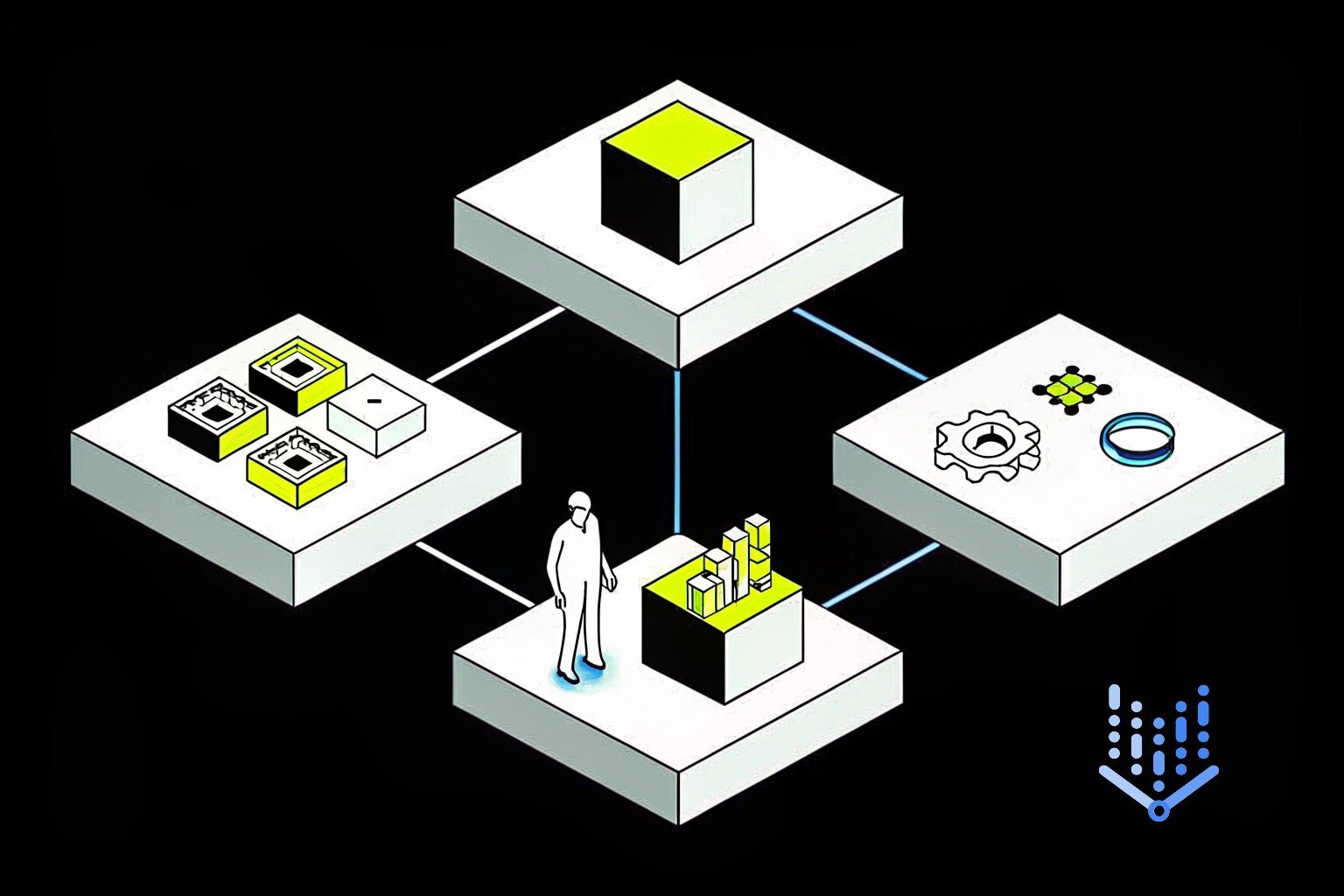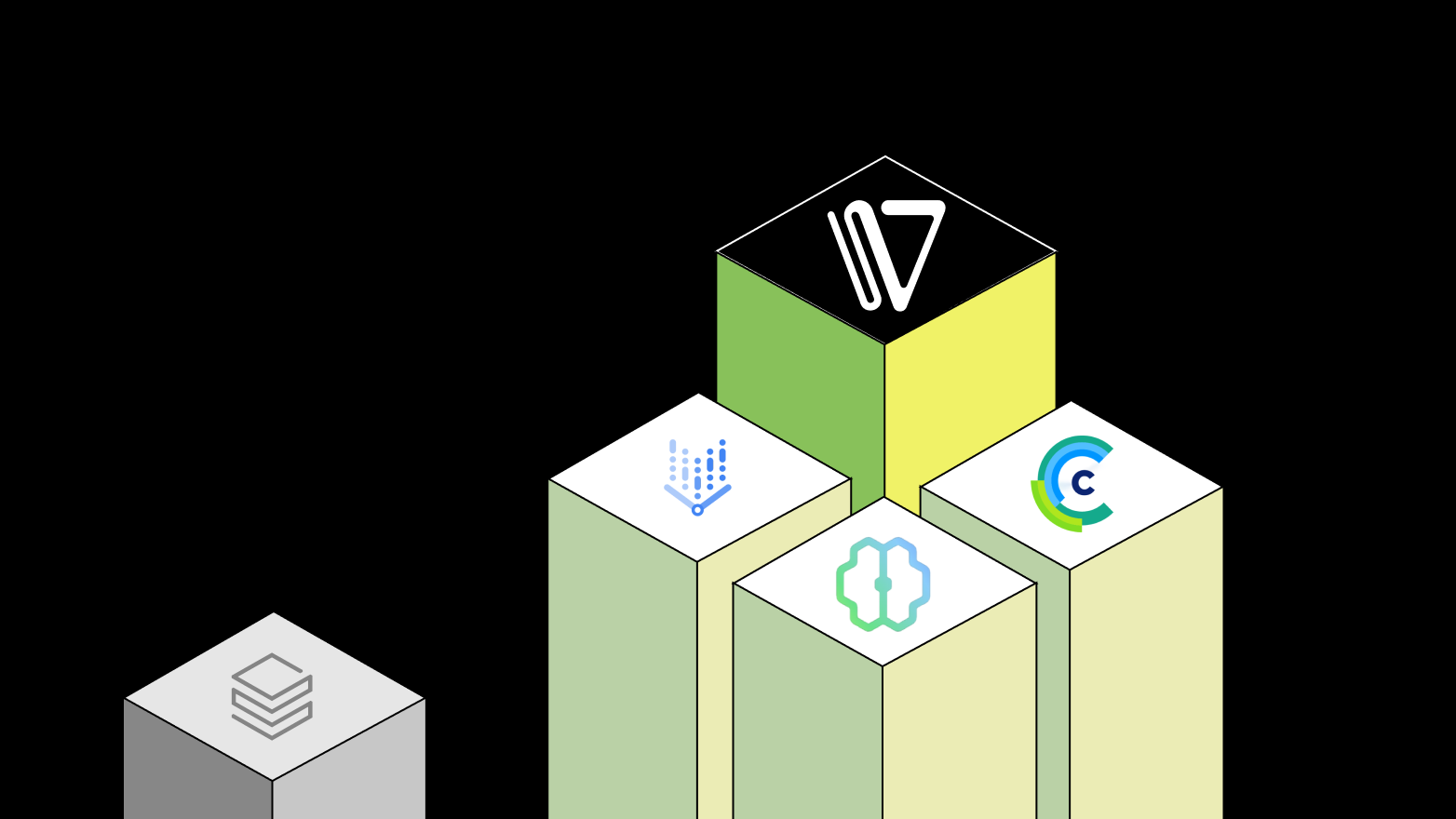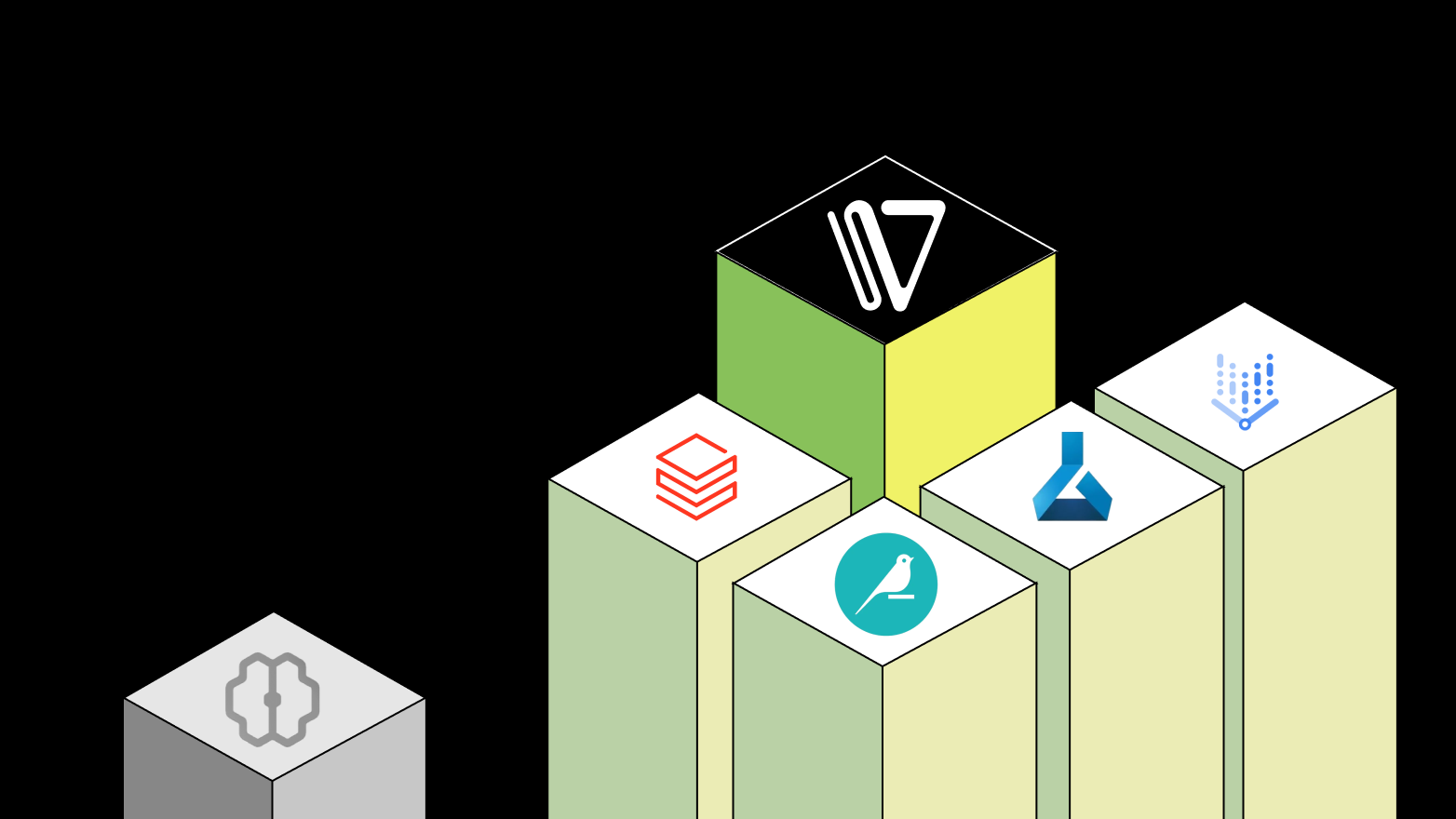Google Vertex Alternatives: Portability, Compliance, and Control

Google Vertex AI is Google Cloud’s fully managed AI and ML development platform. Launched in 2021, it consolidated services like AutoML, AI Platform, and custom model training into one integrated environment. Vertex AI supports the full machine learning lifecycle—from data preparation to deployment, monitoring, and MLOps tooling.
For teams deeply embedded in Google Cloud, Vertex AI provides fast onboarding, seamless access to Google’s foundation models (like Gemini), and tight integration with tools such as BigQuery, Dataflow, and Looker.
Key takeaways
- Vertex AI works well for Google Cloud users but limits portability, customization, and open-source flexibility—constraints that become critical as AI workloads mature.
- Most teams moving beyond Vertex AI follow one of two paths: building a custom in-house stack for total control, or adopting an AI development platform for speed and reduced operational overhead.
- Custom builds offer maximum flexibility but demand significant engineering resources, months of integration work, and ongoing maintenance.
- AI development platforms like Databricks, Dataiku, ClearML, and especially Cake provide modular, secure, and scalable environments—without the vendor lock-in of hyperscaler-managed services.
While Vertex AI is a strong starting point for Google Cloud–native teams, over time, its tight coupling to Google’s ecosystem can feel restrictive. Many teams outgrow it as their AI strategy evolves. Common pain points include:
- Cloud lock-in: limits the ability to adopt multi-cloud or hybrid strategies
- Lack of customization: less control over pipelines, fine-tuning infrastructure, and orchestration
- Limited model support: prioritization of Google’s foundation models can hinder OSS or third-party experimentation
- Governance and compliance concerns: especially in regulated industries
- Cross-organizational friction: especially when teams collaborate across regions or business units.
These are not unique to Vertex. Other managed AI services, such as AWS SageMaker or Azure ML pose similar challenges. They’re great for users tied to those clouds, but still limit portability and flexibility. That’s why most teams looking beyond Vertex AI tend to pursue one of two paths.
IN DEPTH: Why Cake beats AWS SageMaker
Two main paths beyond Vertex AI
Once teams recognize the limitations of Vertex AI, the question becomes: What’s the smartest way forward? The answer usually depends on how much control you want, how fast you need to move, and how many engineering resources you can dedicate to building and maintaining your AI infrastructure.
For most organizations, the choice narrows to two clear strategies. You can either build a fully custom AI stack in-house, taking on the responsibility of integrating, securing, and scaling every component yourself, or you can adopt an AI development platform that delivers flexibility and portability without the operational overhead.
The first path maximizes control but slows time-to-market. The second prioritizes speed and reduces maintenance, while still allowing for customization, especially if you choose a cloud-neutral, open-source-first platform like Cake.
Build a custom in-house AI foundation
Building your own AI foundation from the ground up means taking complete ownership of your architecture—from compute and storage to orchestration, monitoring, and security. You select each component, often from a mix of open-source frameworks and proprietary tools, and design the entire stack to meet your exact needs.
In practice, this can involve:
- Setting up infrastructure (Kubernetes clusters, GPU/TPU compute, object storage)
- Integrating MLOps tools for model training, versioning, and deployment
- Implementing observability for metrics, logs, and traces
- Building governance, RBAC, and compliance workflows from scratch
- Coordination across data science, infrastructure, and compliance teams
Pros:
Total flexibility—choose orchestration tools, infrastructure, and observability systems
Tailored for compliance, customization, and scale
Limitations:
Resource-intensive—can take months (or over a year) to build.
High maintenance burden—requires dedicated platform engineers.
Risk of disruption if key team members leave.
High opportunity cost as engineering time shifts away from core product work.
Adopt an AI development platform
AI development platforms package much of the infrastructure, orchestration, and governance you need into a single, integrated environment—while still allowing flexibility in model choice, deployment architecture, and integration with existing systems. They’re designed to shorten the gap between prototype and production by removing the heavy lifting of stitching together disparate tools.
With a good AI development platform, you typically get:
- Ready-to-use orchestration for training, fine-tuning, and RAG pipelines
- Support for both proprietary and open-source models
- Built-in MLOps workflows for model versioning, evaluation, and deployment
- Preconfigured security and compliance features (RBAC, audit logs, policy enforcement)
- Deployment flexibility—on any cloud or on-premises
This approach is best for teams that want to:
- Move fast without sacrificing compliance
- Reduce the operational burden on engineering teams
- Retain portability to avoid vendor lock-in
- Focus more on model and application logic rather than infrastructure plumbing
The key trade-off: While you gain speed and lower operational cost, you may have to work within the patterns and APIs of the chosen platform, making it essential to choose one that’s truly modular and cloud-neutral.
Databricks
Best for: Data-intensive teams building unified lakehouse–based ML workflows.
Databricks is a unified analytics and AI platform built around the “lakehouse” concept, combining the scalability of data lakes with the performance of data warehouses. It’s deeply tied to Apache Spark and offers robust capabilities for data processing, feature engineering, and ML model development, with tooling like MLflow and Delta Lake. Databricks is powerful for enterprises with large-scale data pipelines, but it can be overkill for LLM-focused teams and often introduces vendor tie-in.
Pros:
Powerful integration of data engineering and ML with Spark, MLflow, and Delta Lake
Strong OSS support and active community ecosystem
Limitations:
Heavy lift for LLM-focused workloads; Spark expertise required
Vendor-locked and AWS-leaning by default
Dataiku
Best for: Cross-functional teams wanting visual and low-code AI workflows.
Dataiku is an enterprise AI and analytics platform that enables data scientists, analysts, and business users to build AI workflows through a visual interface. It offers prebuilt integrations with major cloud and on-prem data sources, visual pipelines for data prep and MLOps, and governance features for enterprise deployments. While excellent for democratizing AI across teams, it’s less flexible for engineering-first organizations that want to own and customize every layer of their stack.
Pros:
Collaborative interface; great for democratizing AI across roles
Built-in governance and pipeline visualizations
Limitations:
Less flexible for engineering-first OSS customization
Cost can scale quickly; platform-dependent
ClearML
Best for: Engineering-first teams committed to open-source orchestration.
ClearML is an open-source MLOps platform designed for engineers who prefer to tailor their orchestration, training, and deployment workflows. It offers queue-based job management, remote execution, and agent-based scheduling, and can run on any cloud or on-prem infrastructure. The trade-off is that scaling, securing, and maintaining the stack is more DIY compared to fully managed platforms.
Pros:
Fully infrastructure agnostic; ideal for on-prem or multi-cloud
Strong experiment tracking and pipeline capabilities
Limitations:
DIY scaling and security; lacks enterprise-grade features out of the box
Cake
Best overall alternative to Vertex AI
Cake is a cloud-neutral AI development platform optimized for enterprise-grade performance, flexibility, and speed. It runs across AWS, Azure, GCP, or on-prem, and orchestrates best-in-class OSS tools under aligned security and compliance.
With Cake, you can:
Seamlessly deploy proprietary and open-source LLMs
Orchestrate RAG pipelines, fine-tuning, and high-performance model serving
Leverage built-in enterprise-grade security (RBAC, audit logs, policy enforcement)
Save significant resources—teams report a 6–12 month acceleration to production and 30–50% infrastructure cost savings versus in-house builds
Success Story: Ping
Ping, a commercial property insurance platform, used Cake to rearchitect its ML infrastructure and saw transformative results:
- Speed gains: Data collection and annotation now run multiple times faster than before—enabling rapid iteration and better data quality.
- Operational efficiency: Consolidated tools into a unified GitOps-managed Kubernetes environment, replacing a patchwork of SageMaker and vendor solutions.
- High-impact savings: Delivered the equivalent output of 2–3 full-time engineers while costing only half an FTE.
- Security trust: Added enterprise-grade security controls to open-source tooling, protecting sensitive PII while enabling safe deployments.
- Continuous modernization: Integrated cutting-edge OSS tools to keep workflows current without disruptive migrations.
SUCCESS STORY: How Ping Established ML-Based Leadership
Vertex AI alternatives: Feature comparison
|
|
Cake |
Databricks |
Dataiku |
ClearML |
|
|
Cloud portability |
✅ Multi-cloud & on-prem |
⚠️ Primarily Databricks cloud / AWS |
✅ Multi-cloud & on-prem |
✅ Multi-cloud & on-prem |
|
|
Open-source model support |
✅ Full support |
✅ Strong OSS tools |
⚠️ Limited |
✅ Full support |
|
|
Foundation model access |
✅ Any API or BYO |
✅ Via third-party |
⚠️ Limited |
⚠️ Manual integration |
|
|
Compliance & security |
✅ Enterprise-grade |
⚠️ Requires setup |
✅ Enterprise-grade |
❌ Minimal built-in |
|
|
MLOps & orchestration |
✅ Built-in, flexible |
✅ MLflow, Feature Store |
✅ Visual pipelines |
✅ Agent-based |
|
|
Best for |
Hybrid, regulated, fast-moving teams |
Spark-based data + ML teams |
Cross-functional AI teams |
OSS-first engineers |
|
The right path for your AI journey
Vertex AI can be a strong starting point for teams committed to Google Cloud, but as AI workloads grow, so do the demands for portability, flexibility, security, and control. That’s when teams start looking for infrastructure that works for their strategy—not the other way around.
You have two main options:
-
Full control with an in-house build: Ideal if you have a large, specialized engineering team ready to invest months in building and maintaining every component of your stack.
-
A portable, enterprise-ready platform: The faster, more cost-effective path for most teams, delivering the speed of a managed service with the flexibility of open source.
This is where Cake stands out. It gives you:
-
The ability to run in any cloud or on-prem, avoiding vendor lock-in.
-
A modular, open-source-first architecture that keeps you at the cutting edge without disruptive migrations.
-
Enterprise-grade security and compliance from day one, so you can confidently deploy AI in regulated industries.
-
A proven acceleration to production—teams often save 6–12 months of engineering time and cut infrastructure costs by 30–50%.
With Cake, you’re not just swapping one platform for another—you’re investing in an AI foundation that adapts with your business, enabling you to experiment faster, scale without friction, and stay in control of your data and models.
Related articles
- Why Cake Beats Amazon SageMaker
- How to Build a Scalable GenAI Infrastructure in 48 Hours
- Beyond SageMaker: Alternative AI Platforms
- GPT-5 Is Here. So, Why Are You Waiting to Build?
Frequently asked questions
Can I run Vertex AI on AWS or Azure?
No—Vertex AI is exclusive to Google Cloud. If portability or hybrid architectures are essential, platforms like Cake, ClearML, or Databricks are better options.
Is switching from Vertex AI to AWS SageMaker a good idea?
Only if you’re migrating to AWS entirely. You’ll face the same trade-offs (lock-in, limited OSS flexibility), and you still won’t gain cross-cloud agility.
How quickly can I go from prototype to production with Cake?
Many teams report being production-ready 6–12 months faster with Cake than they’d achieve building a stack in-house.
Which platform supports open-source LLM workflows best?
Cake leads with full OSS support and model flexibility, followed by ClearML. Databricks supports OSS via MLflow, but its focus is more Spark/enterprise data. Dataiku is more visual and less OSS-tuned.
What about security and compliance for regulated industries?
Cake and Dataiku both offer enterprise-grade security features out of the box (RBAC, audit logging, policy enforcement). Databricks and ClearML require more engineering to secure effectively.
About Author

Cake Team
More articles from Cake Team
Related Post

Top Databricks Alternatives for Modern AI Development in 2025

Cake Team

Save $500K–$1M Annually on Each LLM Project with Cake

Cake Team
.png)
6x MLOps Productivity: How Teams Do More With Less Using Cake

Cake Team

Beyond SageMaker: AI Platforms Built for Speed, Data Control, and Security

Cake Team